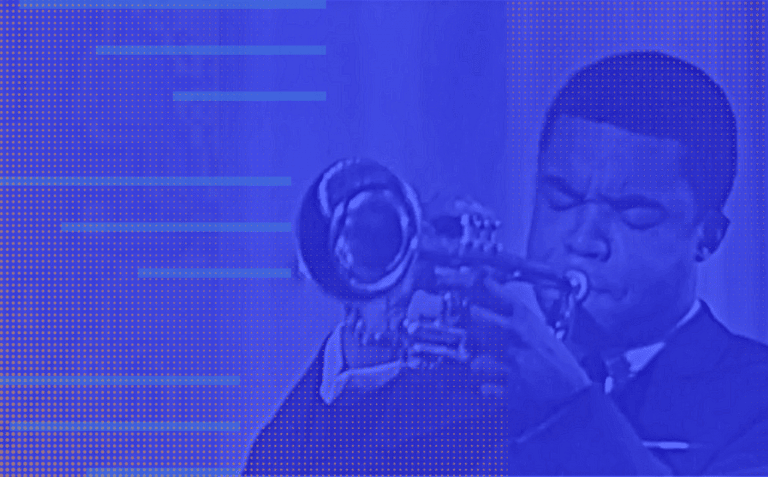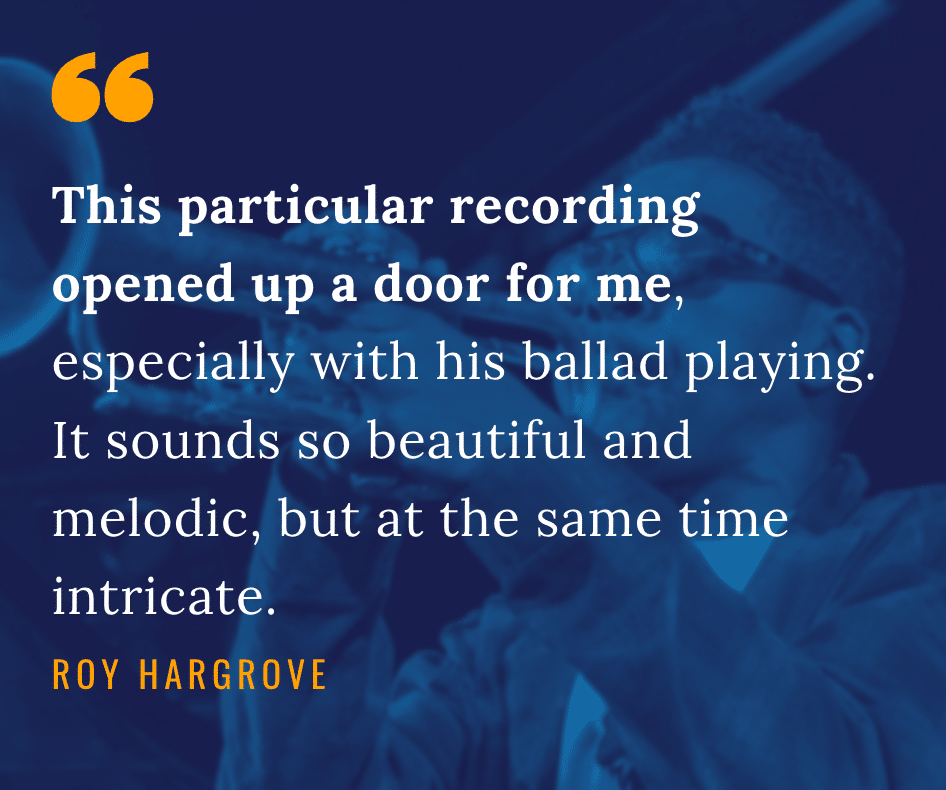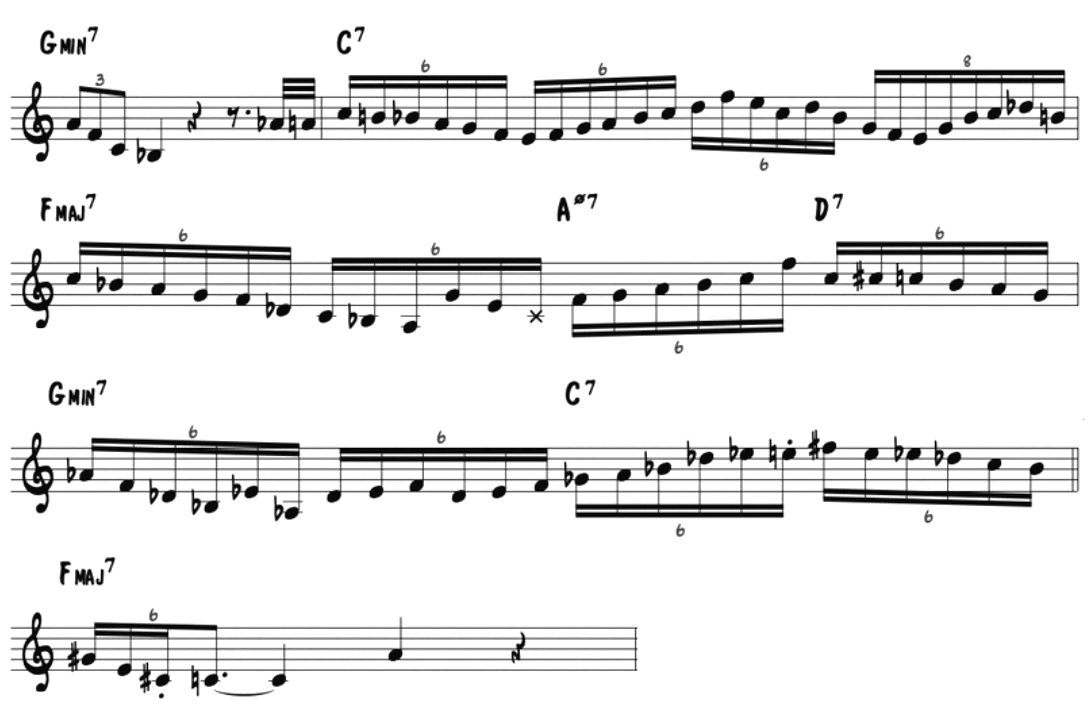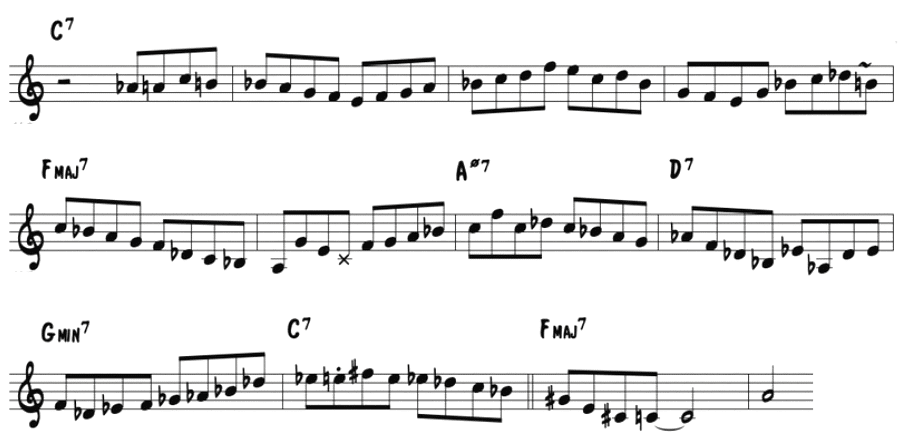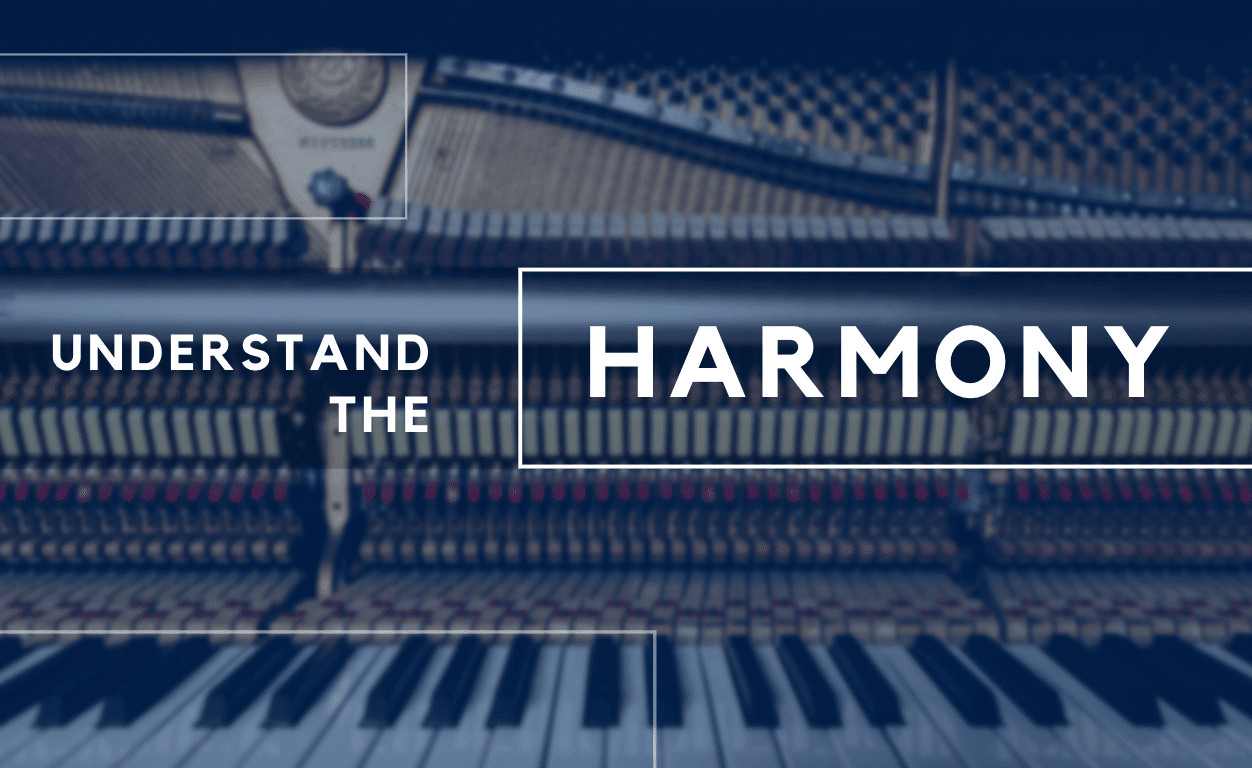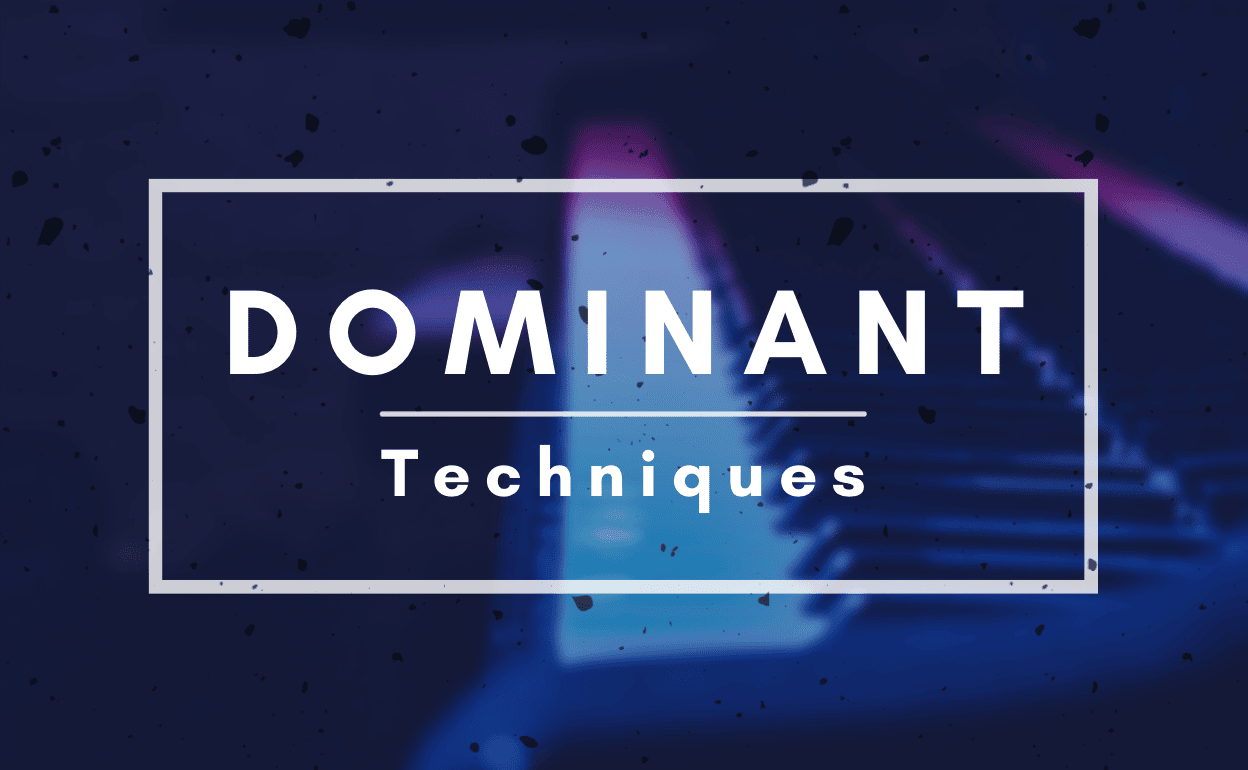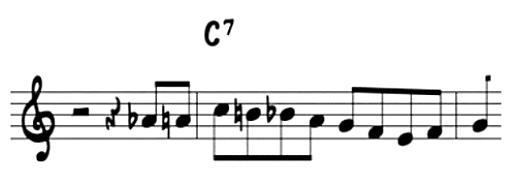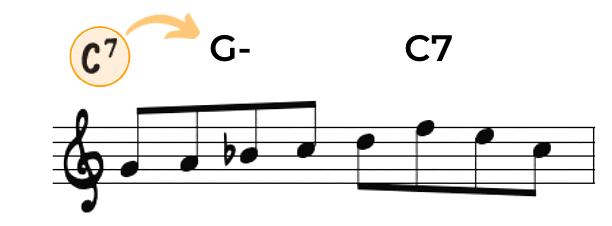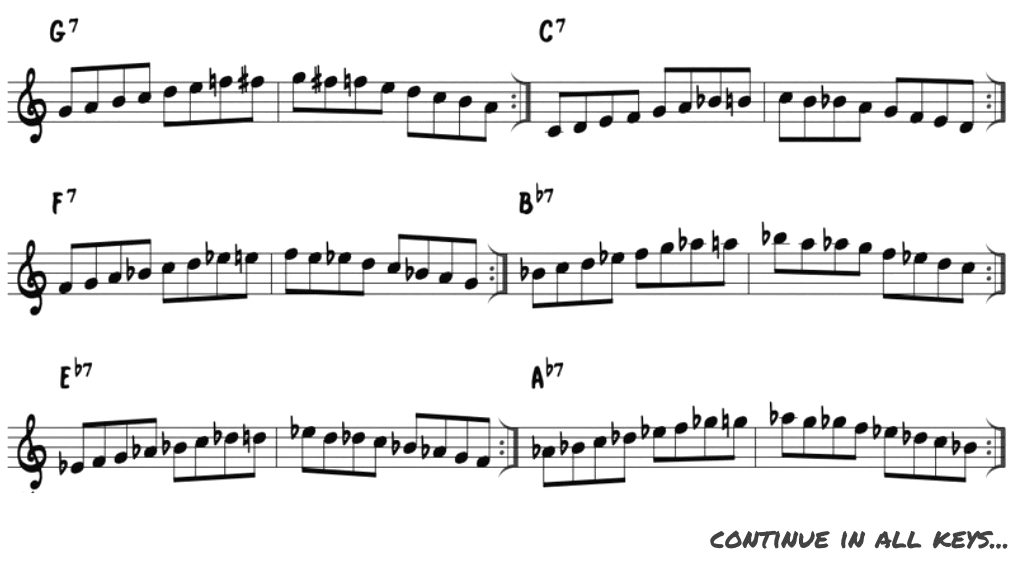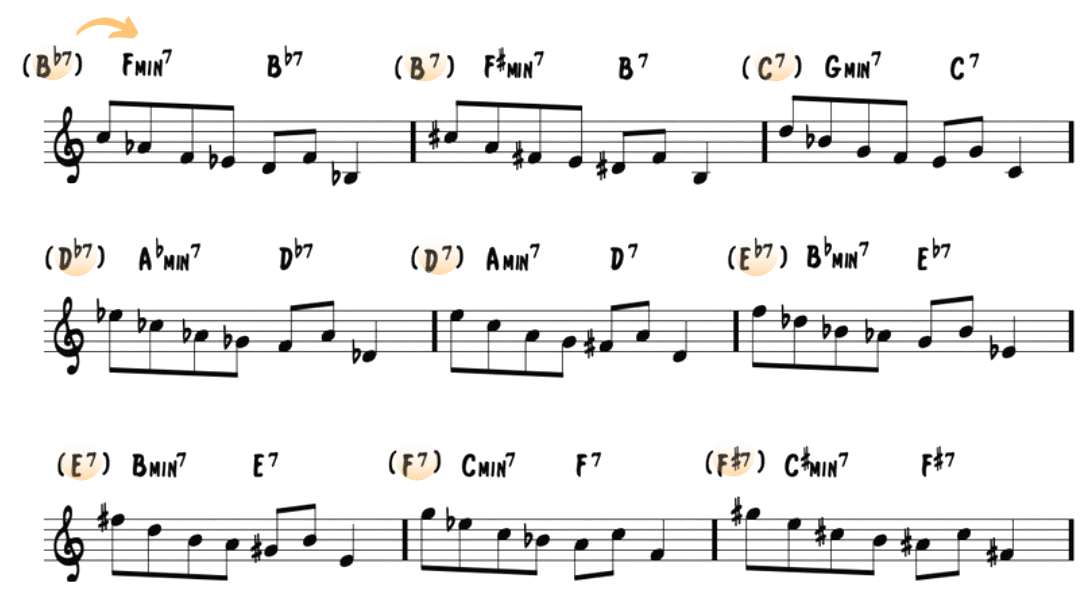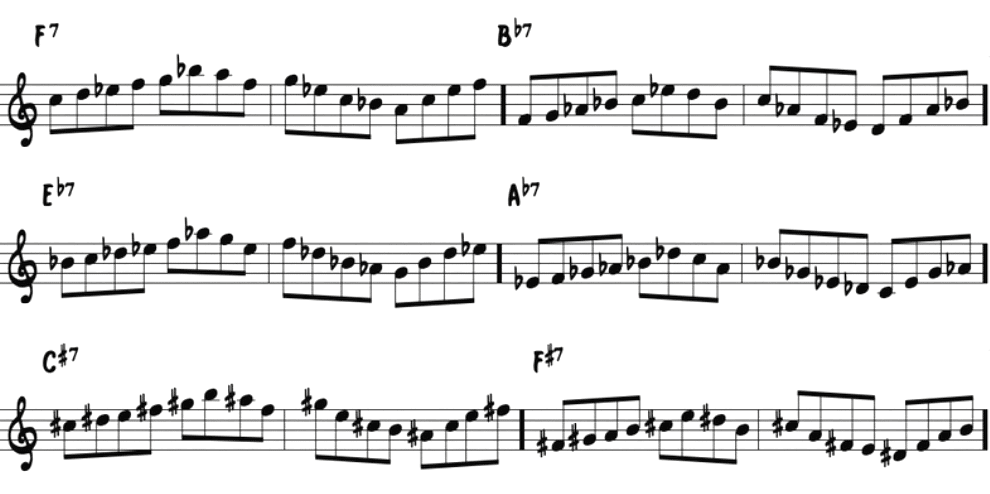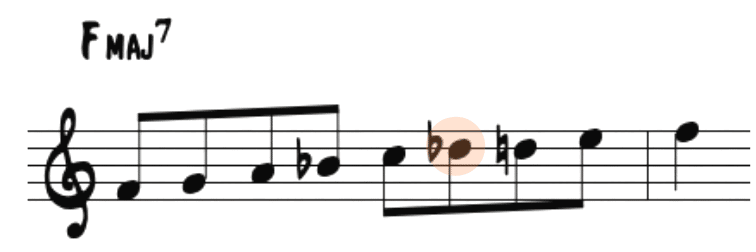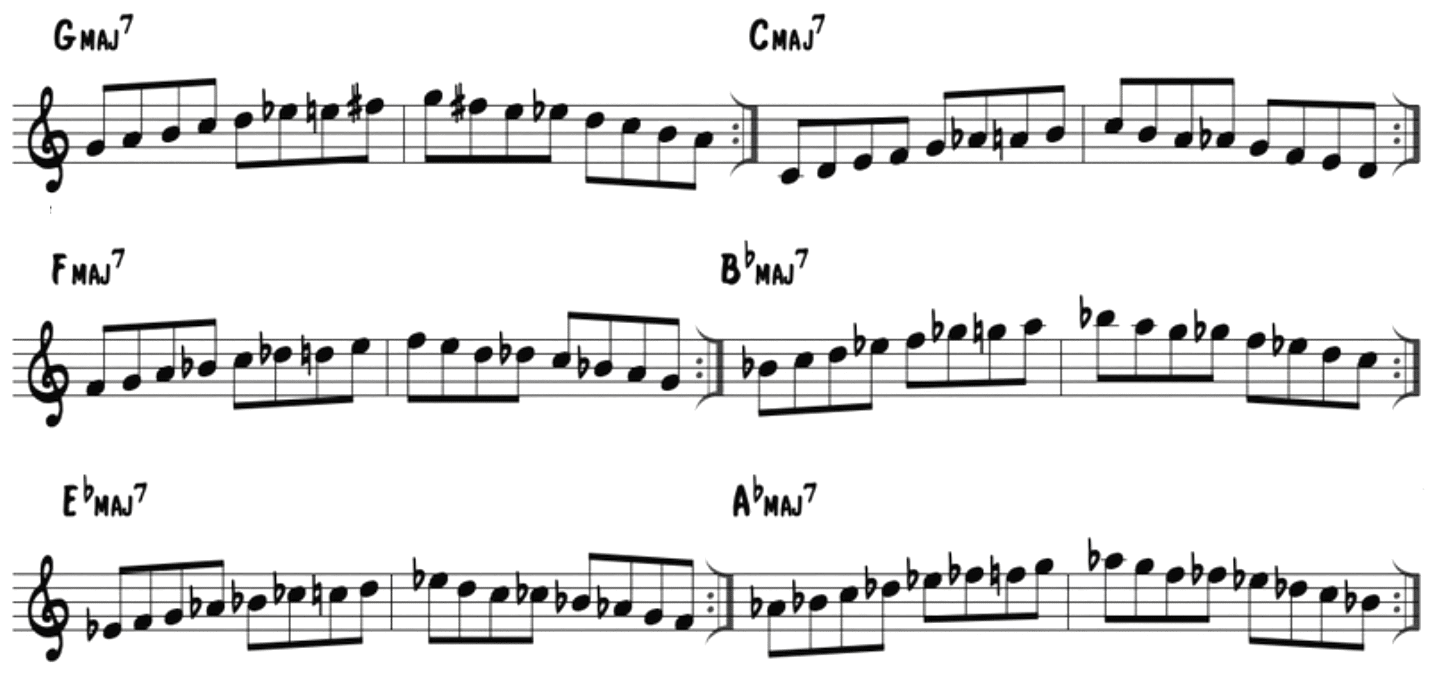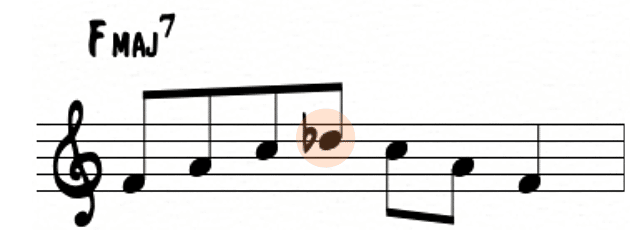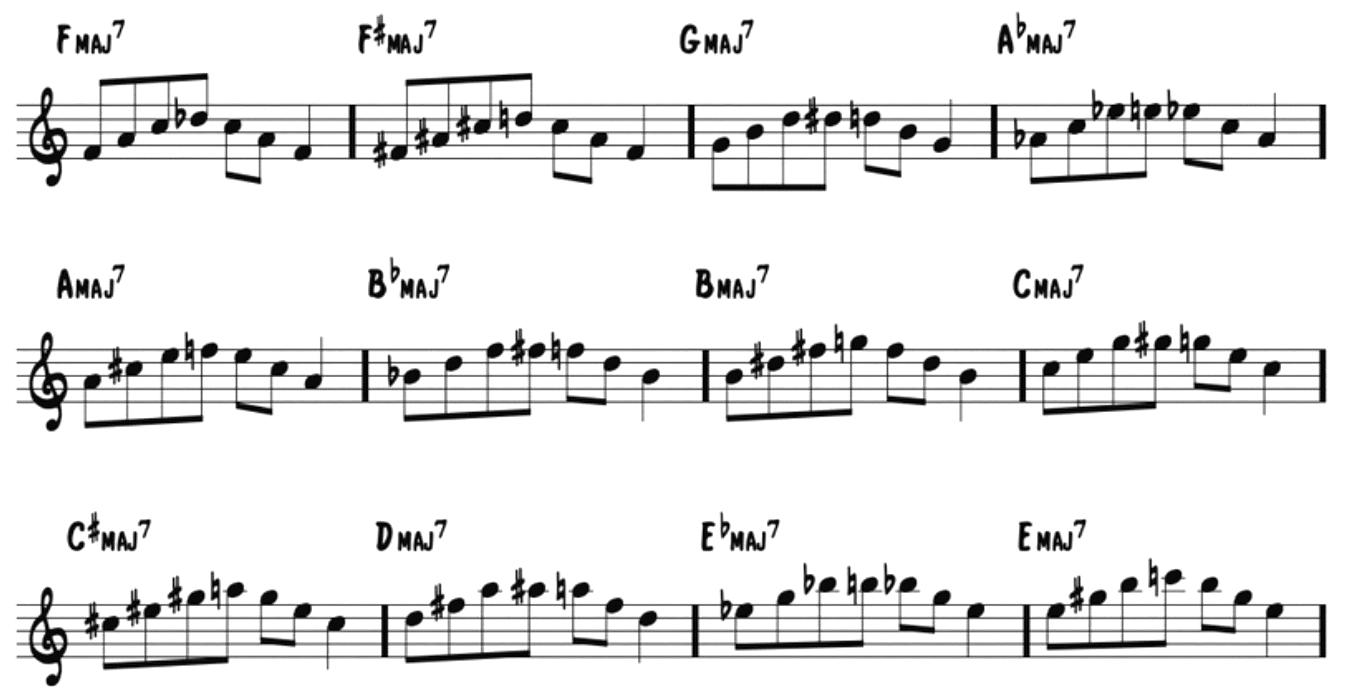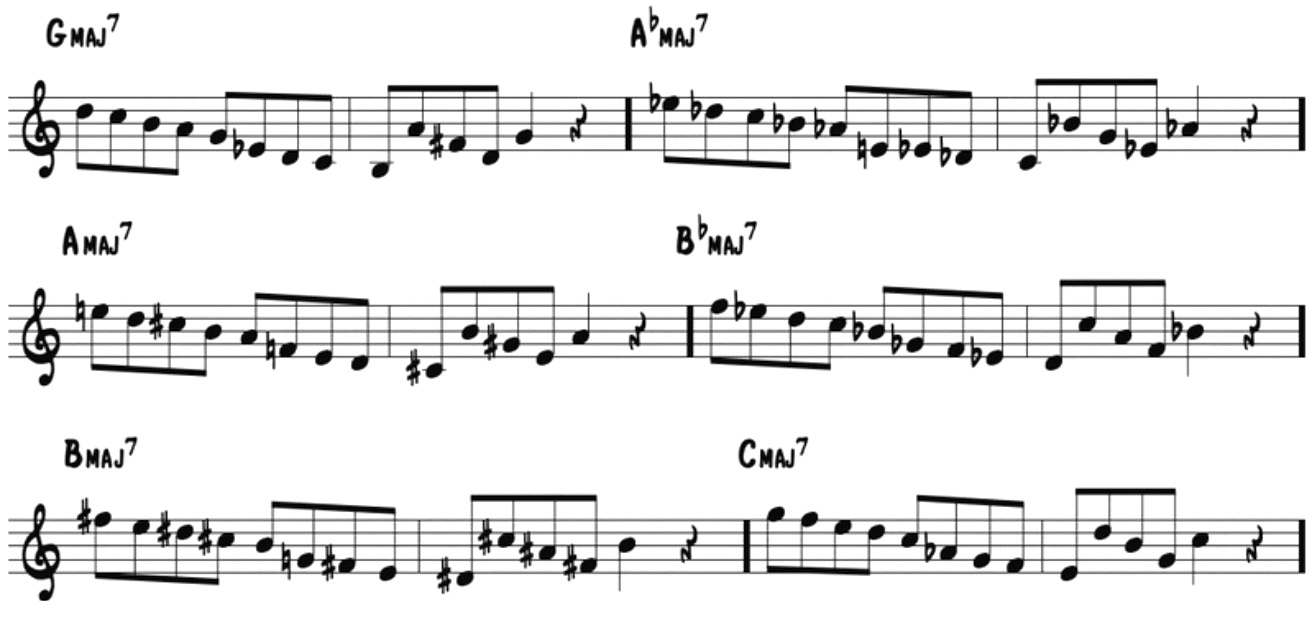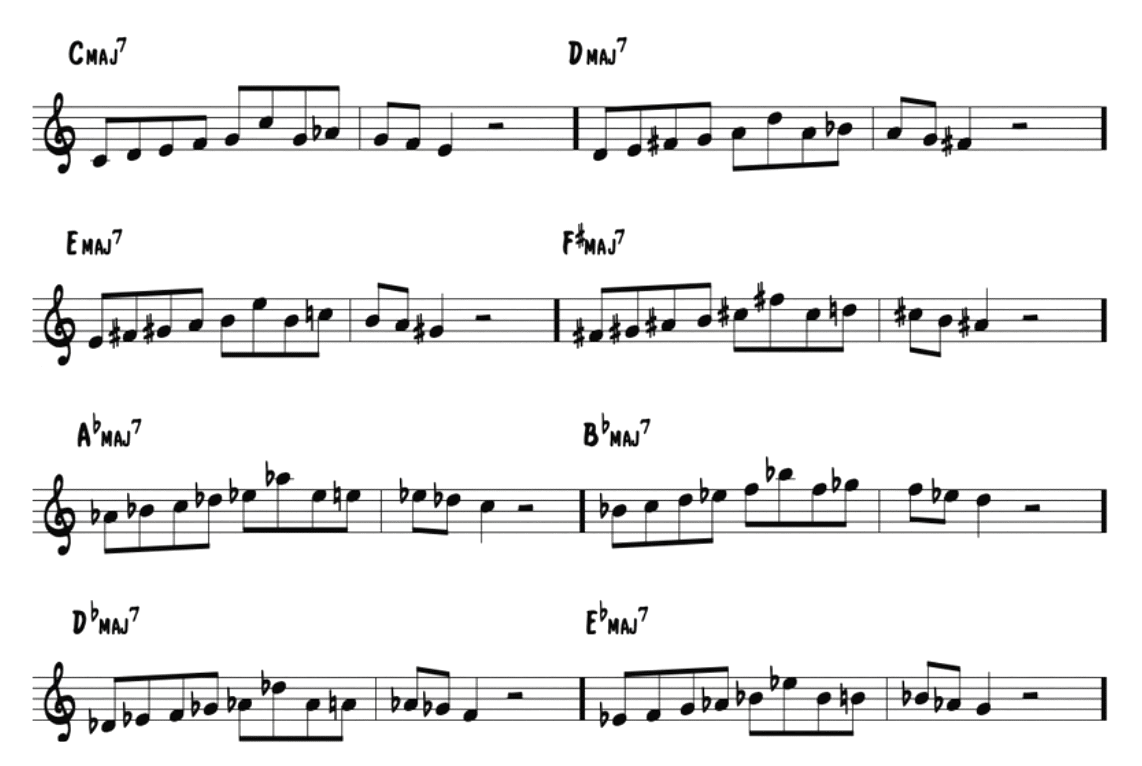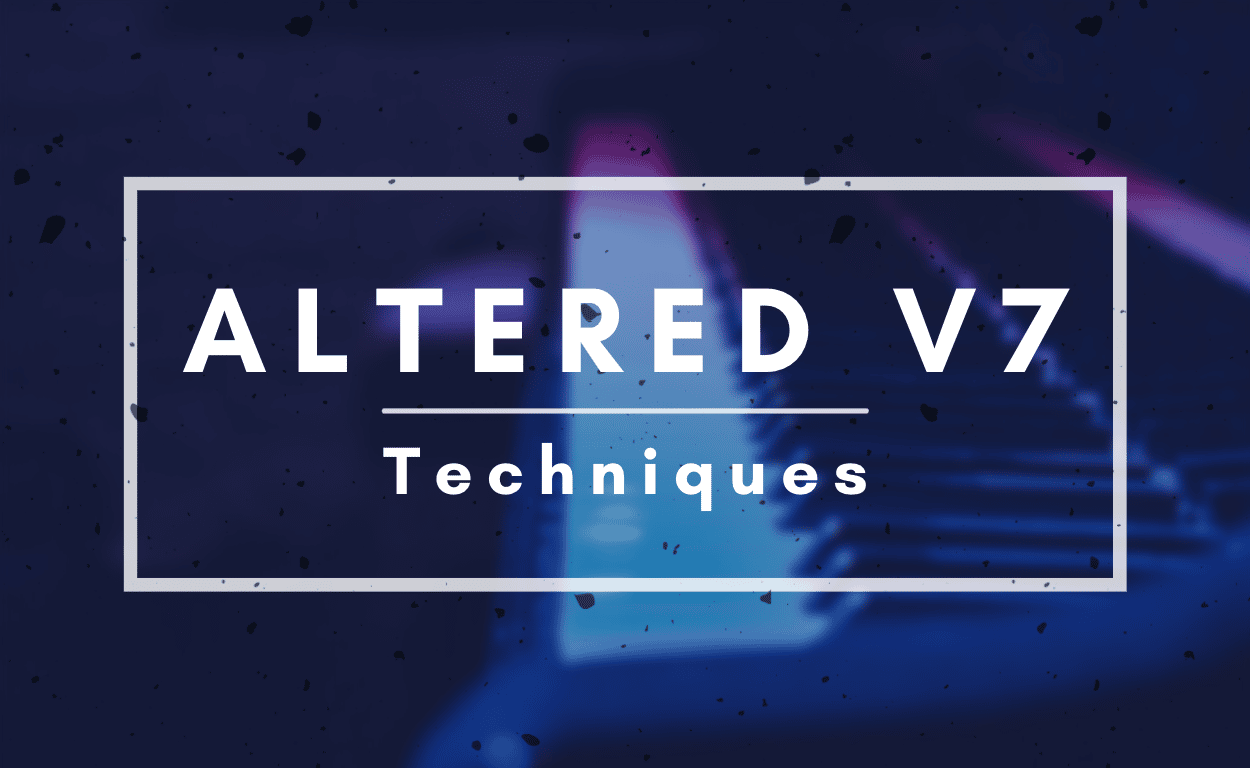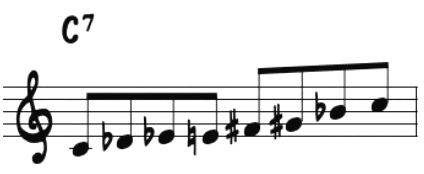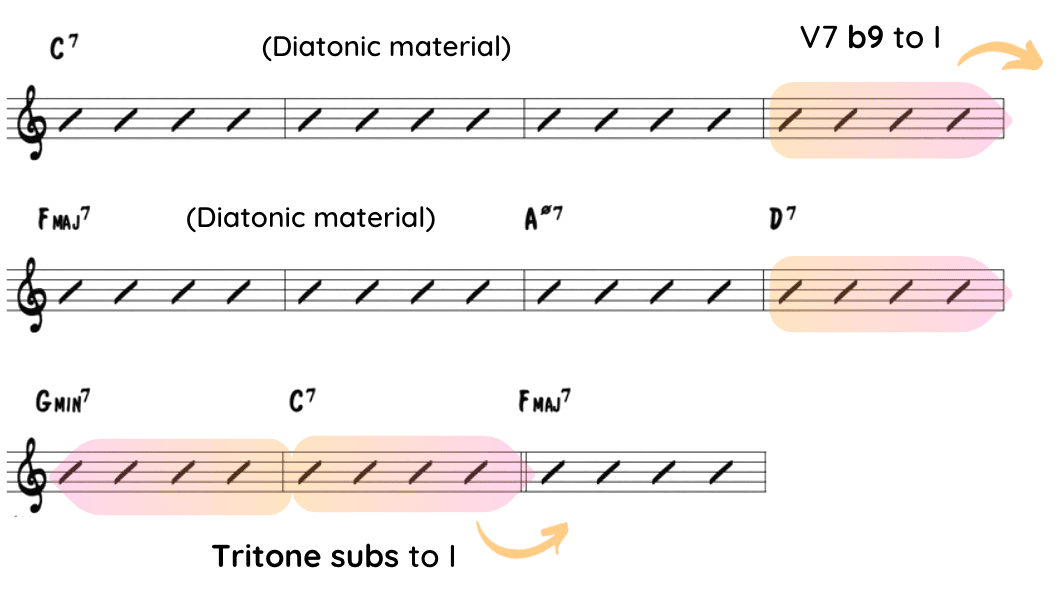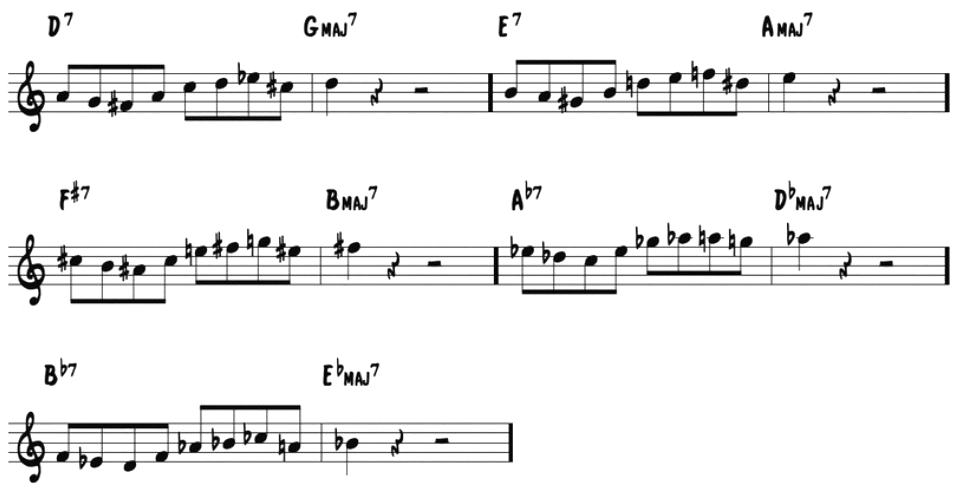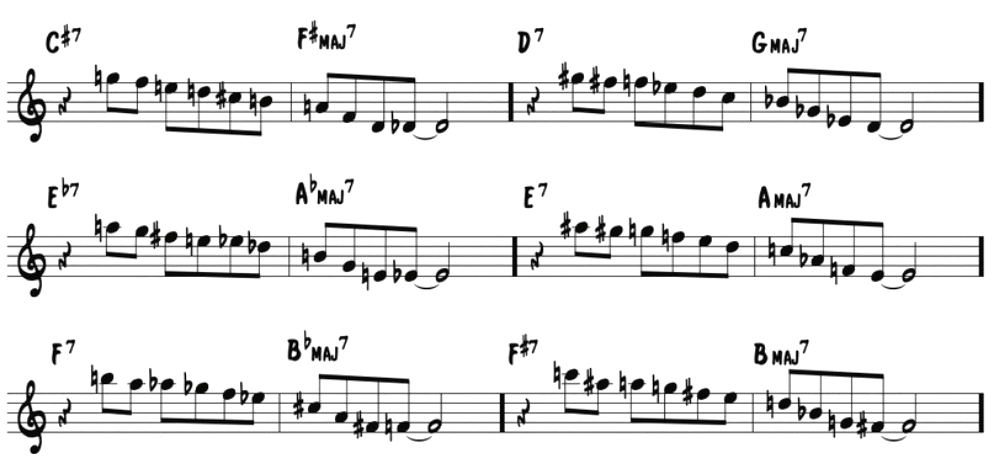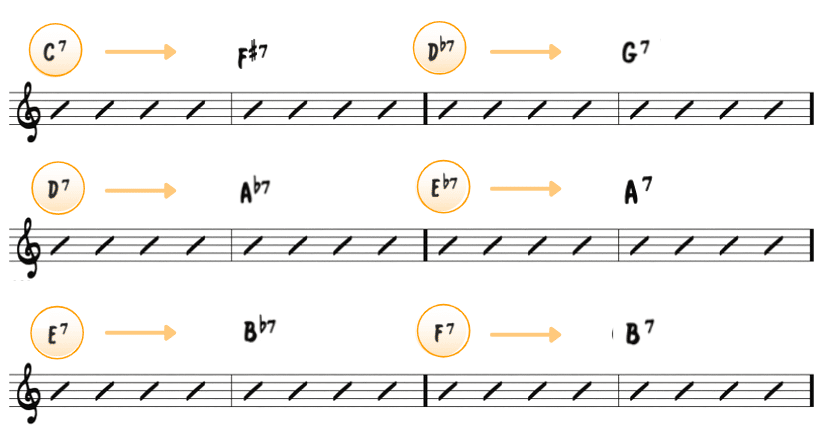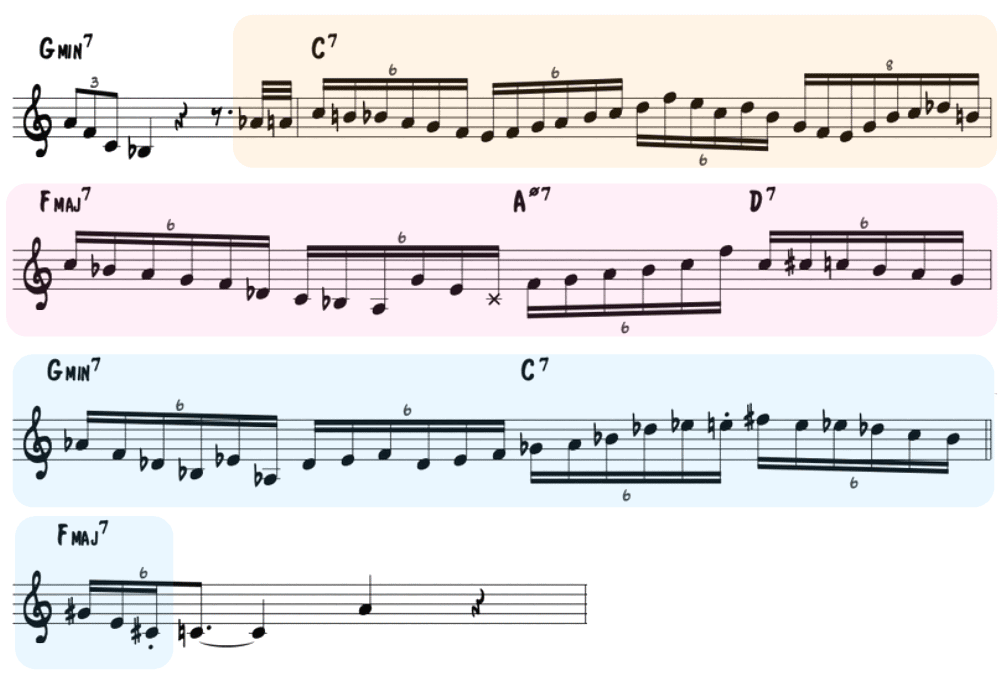There is a common saying in learning the art of jazz improvisation… “If you want to sound like your favorite player, don’t just copy them, copy their musical heroes.”
The logic goes, that rather than just copying and reproducing a master musician’s solo note for note, you should also model their process of becoming a player.
…to go back and find out which musical influences inspired them, who they listened to, their favorite records or tunes, and the specific solos they memorized.
Through this process you’ll begin to understand the musical language they drew from, the tools they used to develop their sound, and their inspirations – and in turn, a pathway for how you can do the same in your own playing!
I was reminded of this the other day as I was checking out a number of Roy Hargrove solos, new and old. And in searching, I came across an interview he did with the BBC where he played and reflected on some of his favorite recordings.
One in particular was a track from Freddie Hubbard’s “The Hub of Hubbard” album.
As Roy says of the solo, “There’s this one line that he plays on here that’s just like crazy!”
Today we’ll take a deep-dive into this specific line and breakdown the musical secrets behind it, showing you a process for utilizing each musical technique in your own solos.
Let’s get started…
One “crazy” Freddie Line
The specific Freddie Hubbard track Roy selected was “The Things We Did Last Summer.” Take a listen to the recording below, Freddie’s solo begins at [3:40] in the video:
Roy points out a specific line in the solo, listen to him talk about it here (and check out the full interview from the BBC program “J to Z“)
At 4:18 in the recording, Freddie plays a long double-time line (nearly 80 notes in the space of three measures!) and if you tried to notate it, it might look something like this:
Although the rhythm and phrasing is an integral part of any line, today we’re going to focus on how Freddie creates melodic motion and double-time lines over the fundamental chords of the jazz repertoire.
Remember, the goal of transcribing something isn’t just to learn the notes or to perfectly notate each rhythm on a piece of paper – it’s to learn the techniques behind the line, to ingrain the sound and feel, and to absorb these elements into your own musical concept.
With any fast or complex line, it’s best to slow it down and simplify it. Then, when you learn the musical concepts, go back and work it out up to speed with the original recording.
So, with this in mind, let’s make a few adjustments to the original line, stretching it out in an easy to read format. Here’s how it might look if it were written in 8th notes:
Even though the rhythms are not exact, in this format we can easily isolate and study each technique. And once you have the techniques and musical concepts mastered, you can come back to the original line and even add your own variations.
In this one Freddie line there is an entire world of musical information and techniques. We’ll explore things like:
- Double-time improvisation techniques
- V7 language and techniques
- Major language and techniques
- Tactics for altering dominant chords
You’ll come away with the techniques behind the original line, and Freddie will be your model for how to apply them in a musical way to a chord progression.
What are the chords?
As with any line you transcribe or learn, it’s vital that you know what the harmonic context is – which chords and progressions are happening under the melodic material.
In this solo, the particular line that Freddie plays happens over the following chord progression:
The harmony here is a ii-V-I with a turnaround that leads back to the top. Freddie plays over three of these measures, creating forward motion that begins on the V7 chord and resolves on the I chord at the start of the form:
The harmonic backdrop is pretty simple here – a Dominant chord resolving to a Major chord and a turnaround leading back to I – something we encounter all the time as improvisers.
*It’s important to note that the bass player is employing tritone substitution over the turnaround in Freddie’s line, descending by half-step from the iii chord back to one:
He substitutes the bass note D with an Ab and the C with an F#, creating a descending half-step motion back to I. And this sequence will come into play as we analyze Freddie’s line…
So the question is this – How does Freddie play so many notes and such a long phrase over a simple and common progression??
Below we’ll breakdown this long line into 3 sections and giving you specific exercises and tactics to play a double-time line or simply a longer or more interesting melodic line over.
These three sections are:
- Dominant chords
- Major chords
- Altered Dominants
Let’s start with what Freddie is doing over dominant chords…
Dominant (V7) techniques
As improvisers, we encounter dominant chords all the time…but this doesn’t mean they are “easy” or that we can pass them over thinking they are basic.
If you think about it, stretches of V7 chords pop up all over the jazz repertoire – the bridge of Rhythm Changes, Sweet Georgia Brown, Bolivia, or One Finger Snap, etc.
Beyond V7 simply resolving to I, you need to have language and techniques for creating longer melodic statements over dominant chords by themselves.
To see what I mean, let’s check out what Freddie plays here over a C7 chord…
In the opening of his line, he uses standard C7 dominant language:
Here he begins with a four-note enclosure of the b7 (Bb) and continues with diatonic material in C7:
The great thing about enclosures is that with a single goal note, you can create linear motion. In this line Freddie approaches the Bb with a 4-note chromatic enclosure, creating 5 linear notes with just one goal note.
You can also look at this line as incorporating a dominant bebop scale:
He descends in scalar motion from the root of the chord and includes the major 7th along with the diatonic b7.
Both techniques are useful for creating more melodic motion or double-time lines over the common chords you’ll find in the jazz repertoire.
Implying ii-V over V7
One of the main techniques Freddie uses in the opening of the line however, is accessing the relationship between a Dominant (V7) chord and its related ii chord…
You can apply ii minor language and techniques to the V7 chord and vice versa. An especially effective melodic technique over an extended Dominant sound is implying ii-V motion:
With this approach you are incorporating the sound of melodic resolution within a static sound once or multiple times throughout your line. Let’s take a closer look at how Freddie employs this technique over that C7 chord…
The tune is in the key of F and the C7 here is the V7 chord. Over this dominant chord Freddie implies multiple ii-V’s (G- C7) to create linear motion and resolutions over a long dominant chord, which eventually resolves to I.
He does this by applying two smaller ii-V’s, one in the second measure:
And another one bar ii-V in the third measure:
In both small phrases, you hear the G minor resolving to C7, a melodic resolution in an otherwise static chord.
This is an essential technique to have in your musical arsenal for any tune that you play!
Rather than trying to simply add more individual notes to your dominant line, you can imply or double up the harmonic material to create melodic and linear motion.
Here are a few exercises based on the Dominant techniques in the Freddie line above to ingrain into your playing.
1. Bebop scale
Start by ingraining the dominant bebop scale in all keys – not so much to memorize a scale, but to ingrain the technique of the half-step motion between the root and b7 of a dominant chord.
This will become an essential technique in creating linear motion in your lines over V7 chords:
Once the basic scale is ingrained, practice starting it and ending it on different chord tones. For instance from the root to the 3rd:
Or from the 3rd to the b7:
Try the same starting on the 5th or from the b7. This subtle chromatic motion will turn diatonic material on any dominant chord into a more melodic line.
2. Bebop scale with enclosure
Next we’ll take the motion of the bebop scale and aim for different chord tones using enclosure. As you’ll see below, using enclosures is a great way to create linear motion and double-time lines from a simple diatonic starting point.
For instance, you can aim for the 3rd of the chord with a three note enclosure:
Or enclose the 5th of the chord with a four note enclosure:
Do the same enclosing the root of the chord or the b7 like Freddie did in the original line.
3. Visualize the related ii- chord and ii-V
Now we’ll work on implying the related ii-V over a V7 chord. The first step is ingraining this relationship in your mind through visualization.
Simply start with a dominant chord and visualize the related ii-V, mastering this relationship in all keys:
This is a harmonic relationship that you’ll use all the time as an improviser, so make sure you have it ingrained to the point where it’s almost second nature.
4. Implying one bar ii-V’s
Once you can visualize the related minor ii chord and ii-V of each dominant chord, try implying some simple melodic ideas of one bar ii-V’s over this measure:
Also try the same with the single ii-V’s that Freddie plays in the original line, or any other ii-V language that you have. *For more ii-V ideas, check out this lesson.
5. Implying multiple ii-V’s
Using the same concept as implying a one bar ii-V over a V7 chord, Freddie doubles this concept up implying two ii-V’s in a row to create a longer line:
Learn this line and concept over dominant chords in all keys:
If you master these dominant techniques in the practice room, you’ll immediately find that you are able to play longer, more complex melodic ideas over the V7 chords in your solos.
As you return to the original Freddie line, practice it in all keys, increase the tempo, and see if you can create your own variations using the concepts we covered above:
Major Chord techniques
Just like dominant chords, it can be tricky to create interesting melodic phrases over a static Major chord…
Beyond the usual Major scale and arpeggios, what can you use to improvise musical ideas over the Major chords in your solos??
Let’s take a listen to how Freddie navigates this sound from a melodic perspective…
If you analyze this line in relation to the underlying F Major chord, Freddie is playing diatonic material with the exception of one note – the Db.
The Major Bebop Scale
This particular note is the b6th (or #5) and a useful tool for expanding your Major vocabulary. You many have encountered the sound of the major scale or triad with the b6 in the Major “bebop scale.”
In a descending fashion, it works especially well because it creates half-step motion and strong resolution points from the b6 to 5th and from the 4th to 3rd, the chord tones falling on downbeats:
…as opposed to a regular Major scale, where there isn’t the half-step resolution to the 5th and the chord tones don’t line up on downbeats:
Incorporating the b6 is an effective way to create melodic lines and shapes using the diatonic notes of the major chord, a technique that you should have in all keys.
1. Ingrain the Major scale w/b6
The scales below are notated with the b6 here, but you can also think of the #5, or both as you ascend and descend the scale.
2. Ingrain the Major triad with b6
Next, incorporate the b6 with a basic Major triad:
The b6 naturally resolves to the 5th of the chord. Practice and ingrain this sound in all keys:
And be sure to ingrain it in different inversions as well, covering the entire range of your instrument.
3. Freddie Major idea #1
Learn the first idea Freddie plays over the Major chord, which combines both the b6 and scalar motion:
Here he descends from the 5th of the chord, an easy way to create a line with strong melodic motion, using diatonic material. Ingrain this line in all keys:
4. Freddie Hubbard Major Idea #2
Then learn the next idea Freddie plays, again combining the Major triad and scalar motion with the b6:
Ingrain this line in all keys:
Both of these lines are great ways for you to easily create melodic ideas that are not scales on Major chords.
Finally, return to the original Major line and take it through every key, gradually increasing the tempo until you have it up to speed:
Altering Dominant chords
An easy way to explore harmonic tension is by altering the dominant chords in any progression.
…and in your solos, this can range from a few altered chord tones to substituting entire chords or even implying a different progression altogether.
Let’s take a look at three ways that Freddie alters the dominant chords in his line, starting with the musical idea below:
Utilize the b9
The first dominant alteration Freddie employs in this line involves altering one note – the 9th…
In this line over a C7 chord he emphasizes the b9 and uses it to enclose the 5th of the I chord in the following measure.
The b9 is a commonly used way to alter the dominant chord and a sound that you should definitely have in your musical toolbox.
The ‘altered’ scale
The next tactic Freddie uses to alter a dominant chord is using the altered scale. This scale is an easy and effective way to access all of the “altered notes” on a dominant chord.
For instance, here is an altered scale starting on C:
Now check out how Freddie utilizes these notes in the line below:
Here he emphasizes the F# and descends in scalar motion, delaying the resolution to the 5th of I chord by a few beats:
Even though you might not always play the altered scale in exact form or sequence, you need the technical ability to access these notes over any V7 chord.
Tritone substitution
As we mentioned earlier, the bass player implies tritone substitution over the turnaround and Freddie mirrors this in his solo as well. Take a look at the line below:
Over the D7 he quickly switches to material in Ab, over the G- he plays Db material and as we saw above, over the C7 he emphasizes the F# using the altered scale.
All of these substitutions create harmonic tension and interest that will eventually resolve to the upcoming I chord.
Notice how in each of these cases Freddie applies V7 alterations right before resolving to the I chord, creating harmonic dissonance that strengthens the upcoming resolution to I.
In his line, Freddie carefully places dominant alterations and harmonic tension at key points, right before resolving to the I chord:
The alteration can simply be one note that is emphasized like the b9, or a longer substitution that eventually resolves.
1. Review V7 alterations
The first step in utilizing dominant alterations in your lines is learning the link to post, visualize and ingraining b9, #9, b13, #11
Ingrain the possible alterations for a dominant chord in any key:
Practice these with the piano or a drone tone, so you ingrain the unique sound of each alteration against the original chord.
Also, know how each of these altered tones resolves back to the I chord:
- The b9 resolves to the 5th of I
- The #9 to major 7th
- The #11 to root
- And the b13 to the 3rd
2. Freddie b9 line
Next, we’ll focus on Freddie’s line that utilizes the b9 resolving to the I chord by enclosing the 5th:
As a preliminary exercise, practice starting on the 3rd of V7 and arpeggiating up to the b9 in all keys:
Then, once you have that down, ingrain the Freddie b9 line in all keys:
3. Altered scale
A useful way to ingrain all of the altered notes on a dominant chord is by practicing the altered scale. Practice this in all keys, descending and ascending, and be sure to understand and hear how each note relates to the underlying V7 chord:
4. Freddie altered line
The material that Freddie plays at the end of his line incorporates the altered scale and ends with the tritone ii- minor before resolving:
6. Visualizing the Tritone subs of V7 chords
And finally, practice visualizing the tritone substitution for dominant chords in every key:
One you have this relationship ingrained, the next step is applying dominant language and techniques to these substituted chords.
One line, dozens of techniques…
Now with the individual techniques down, it’s time to go back to the recording of the original line…
Looking at it now, it’s easier to see that it’s not just a long line with random individual notes, but a seamless collection of musical techniques that are applied in a masterful and musical way…
A line with three sections: Dominant techniques, Major techniques, and Altered V7 that eventually resolve to the I chord.
Focus on the time, the rhythm, and the sound & feel with which Freddie plays. Notice where he places the line within the progression, where he starts the phrase, and which notes he emphasizes.
…this is just as important as the notes he plays!
Remember, if you master the small details, which are built on surprisingly fundamental concepts, you will slowly gain techniques for each of these common chords.
And with time, you’ll be able to combine them in a musical way in your solos.
